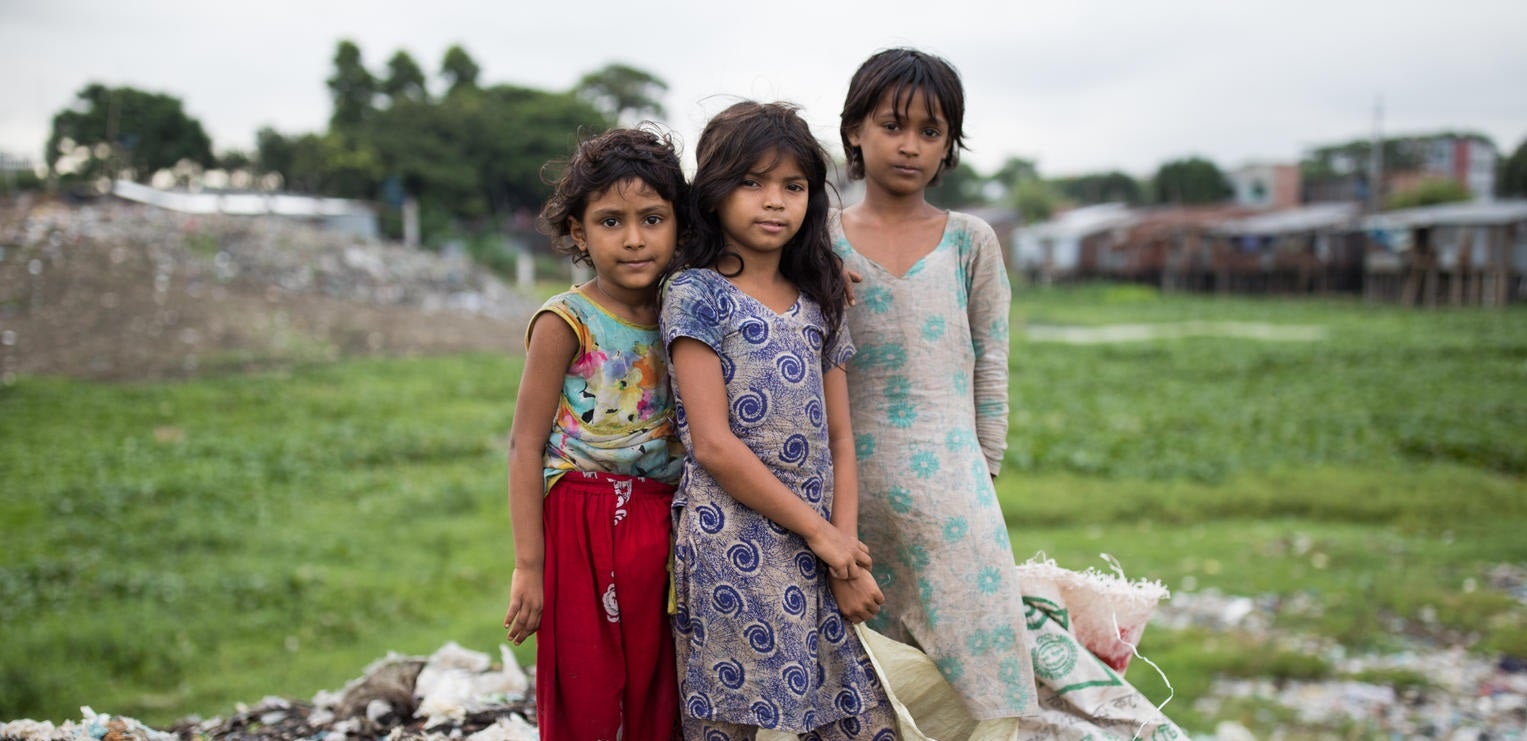Children born in 2050 can expect to live longer and have better access to education but they're facing a world where the climate crisis will continue to worsen and technology offers both promise and risk, according to a new UNICEF report published today.
UNICEF’s annual flagship report, The State of the World’s Children 2024: The Future of Childhood in a Changing World, released to coincide with World Children’s Day, projects how three megatrends - demographic changes, the climate crisis and breakthrough technologies – will impact children’s lives by 2050 and beyond.
Every year, UNICEF’s key report examines key issues affecting children, making it the most comprehensive analysis of global trends impacting children.
“This is the first time that UNICEF’s annual flagship report has looked at what the future might hold for our children’s children in 2050 and how three global forces - demographic shifts, breakthrough technologies and the climate crisis will profoundly impact children’s lives,” says Libby Hodgson, Deputy Director at UNICEF Australia.
“The positives for children born in 2050, based on this comprehensive analysis of global trends shows that children are expected to live longer and have better access to education, however, on the flipside, they will be facing a world where the climate crisis will continue to worsen and technology will offer both promise and risk.”
Based on where the trends are heading, life expectancy at birth is projected to increase by 4 per cent to more than 98 per cent. The modelling suggests that progress made in the past 100 years for children’s education will continue with nearly 96 per cent of children globally expected to have at least a primary education in the 2050s, up from 80 per cent in the 2000s.
For health and education, increased investment and more stringent environmental protection, could improve child outcomes significantly. For example, the gender gap in educational attainment would narrow, and exposure to environmental hazards would be reduced.
“Children are experiencing a myriad of crises, from climate shocks to online dangers, and these are set to intensify in the years to come,” said UNICEF’s global Executive Director Catherine Russell.
“The projections in this report demonstrate that the decisions world leaders make today – or fail to make – define the world children will inherit. Creating a better future in 2050 requires more than just imagination, it requires action. Decades of progress, particularly for girls, are under threat.”
The environmental crisis is already dire, with 2023 being the hottest year on record. As we near the middle of the century, the analysis suggests that in the decade of 2050-2059, climate and environmental crises are expected to become even more widespread, with eight times as many children exposed to extreme heatwaves, three times as many exposed to extreme river floods, and nearly twice as many exposed to extreme wildfires, compared to the 2000s.
UNICEF has also examined the potential impact on children’s lives, with a focus on digital technologies such as Artificial Intelligence (AI), which offer both promise and risk for children, who are already interacting with AI embedded in apps, toys, virtual assistants, games, and learning software.
The digital divide remains stark. Analysis shows that 95 per cent of people in high income countries are connected to the internet, compared with barely 26 per cent in low-income countries. Obstacles to progress include infrastructure limitations, high costs and permission barriers.
Modelling also suggests that over the next 25 years there will be notable demographic shifts, with Sub-Saharan Africa and South Asia projected to have the largest child populations in the 2050s. They also indicate an aging population, with the share of children expected to decrease in every region of the world.
While still high, the child population drops below 40 per cent in Africa – down from 50 per cent in the 2000s. It falls below 17 per cent in East Asia and Western Europe – where children made up 29 per cent and 20 per cent of the populations, respectively, in the 2000s.
These demographic shifts are expected to create challenges, with some countries under pressure to expand services for large child populations, while others need to balance the needs of a growing elderly population.
The report includes analysis, which forecasts that globally, nearly 60 per cent of children will live in urban areas in the coming decades, up from 44 per cent in the 2000s so it’s important these built-up environments are healthy and secure.
The State of the World’s Children 2024 highlights the importance of child rights, as outlined in the United Nations Convention on the Rights of the Child, in all strategies, policies and actions. It calls for meeting the challenges and opportunities posed by the three megatrends by:
- Investing in education, services, and sustainable and resilient cities for children.
- Expanding climate resilience in infrastructure, technology, essential services and social support systems.
- Delivering connectivity and safe technology design for all children.
“World Children’s Day is a moment for leaders to demonstrate their commitment to the rights and wellbeing of every child,” said Russell. “We can shape a better future for tomorrow’s children, and we have to get started today.”


